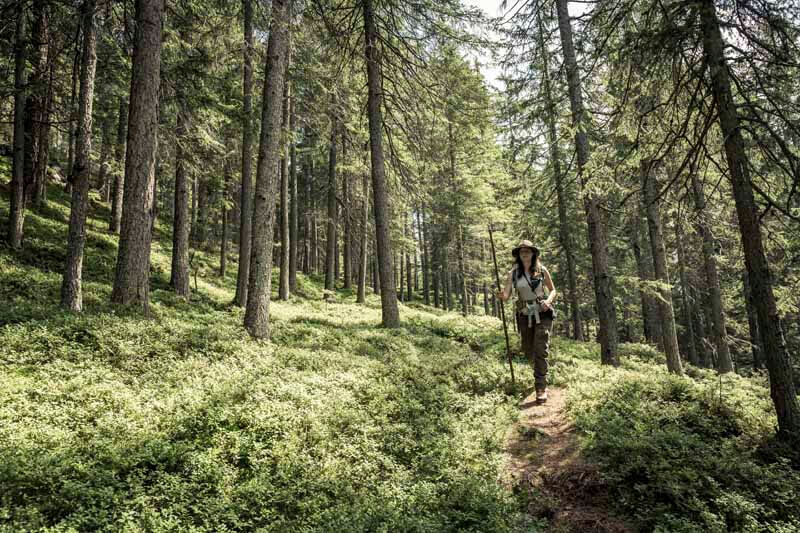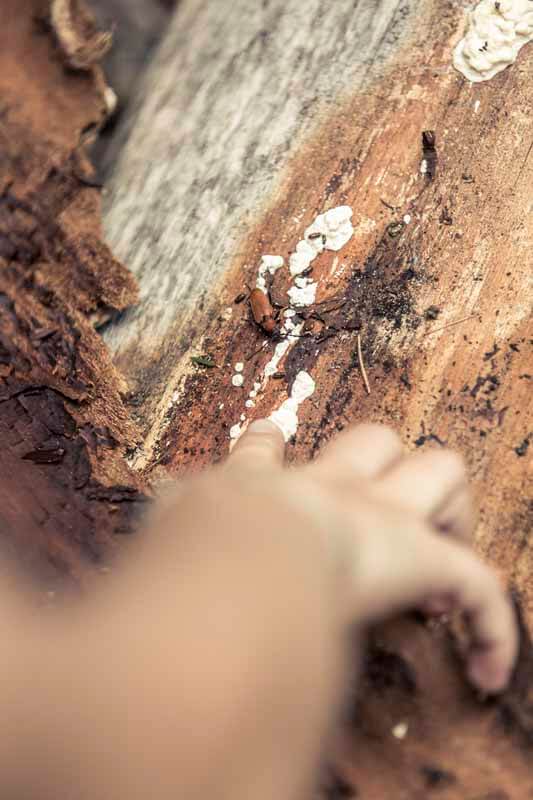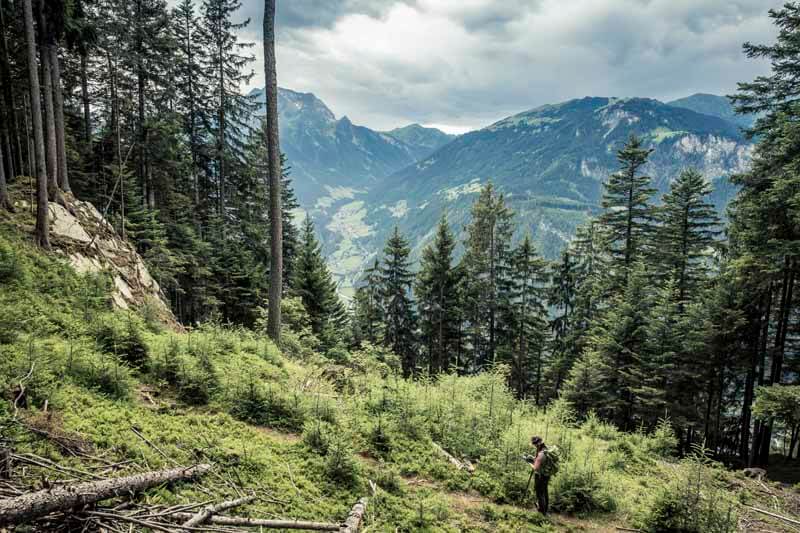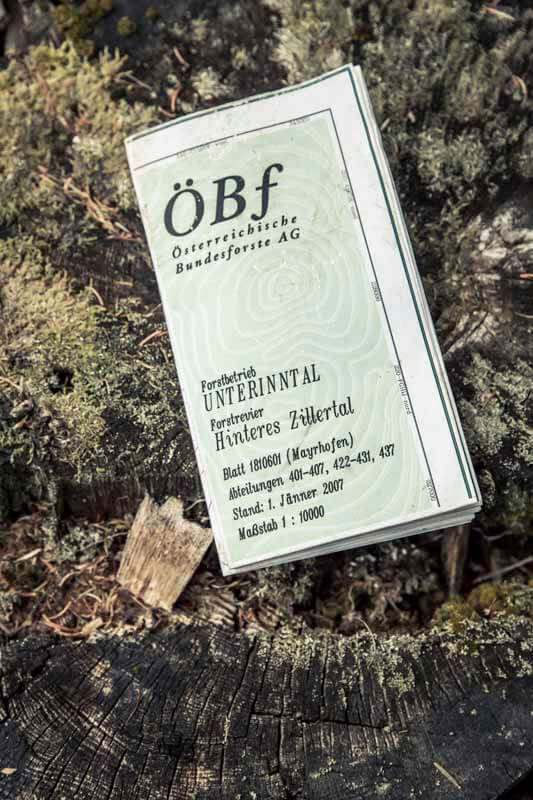
Stories to marvel
Fabulous Forests
Forestry explorations
If you look at Zillertal through Palmira Deißenberger’s eyes, it is hard to see the woods for the trees. After all, it is her job to map and analyse the legendary 4,500 hectares of forest in the valley! Her initial diagnosis: the conifers are still very happy here.
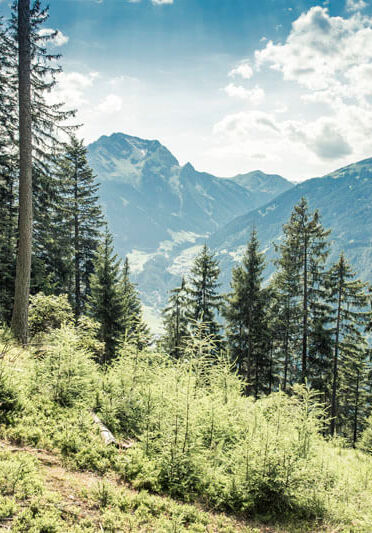
It takes around 120 years for a tree to reach a state in which it can be felled, i.e. in which its wood can be harvested from the “commercial forest”. Providing it is naturally healthy, has grown well and many other parameters are right that is. To ensure optimum conditions for thriving forests, constant management is essential. As such, Palmira Deißenberger has been out and about in Zillertal’s forests for months. The 27-year-old Austrian is a professional forest assessor who works for the country’s federal forest service Österreichische Bundesforste (ÖBf). This means that she is a tree expert who acts as a kind of guardian angel of the forest. She analyses and maps, assesses and logs – always with the aim of creating the most precise possible diagnosis of the condition of various areas of forest. In other words, a forest inventory that will help the landowners successfully manage their tree stocks. “And help keep the trees healthy”, Palmira quickly adds.
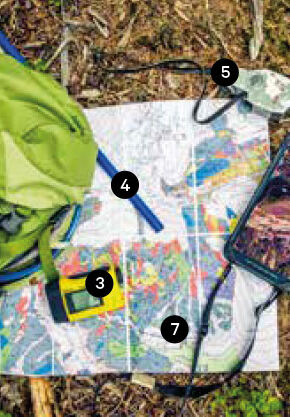
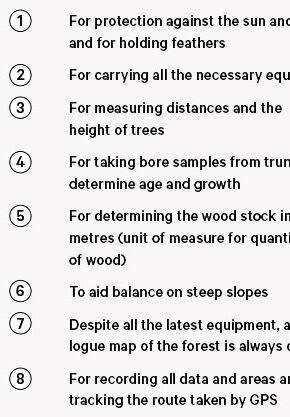
A plethora of rare birds
The specialist’s current task is to create an initial inventory and assessment of Zillertal’s forests: “Unlike in many other areas, the conifers here are still very healthy”, she says with a nod towards them. In many other parts of Central Europe, large expanses of forest have fallen victim to climate change and the mass proliferation of the bark beetle. “Look, can you see here on the trunk?” Palmira uses her long hazel pole, which acts as a “third leg” for her in the undergrowth, to point to several tiny holes under a thick knothole. “Those were made by a black woodpecker”, she comments happily. In fact, the presence of woodpeckers and other birds is an important indicator for Palmira’s work: “Birds like woodpeckers, wood grouse and boreal owls place high demands on their habitats. If these species live somewhere, you know that the habitat is in good condition.” Otherwise, the main way to detect the presence of specific bird life is by the feathers. The qualified forestry expert likes to collect these to decorate the brim of her hat. “They’re my little trophies”, Palmira grins indicating the plume of feathers that adorn her beloved headgear. And here in Zillertal, Palmira has already collected feathers from a fair few rare birds.
“I collect rare bird feathers and
stick them in the brim
of my hat as little trophies.”
Palmira Deißenberger,
Österreichische Bundesforste forest assessor
What really matters in the forest
But the expertise provided at the end of her work naturally has to be based on far more accurate data than these lovely signs of animals. To make this possible, Palmira’s backpack holds a whole array of special equipment, which forms the scientific basis of her work. In simplified terms, this can be described as follows: a forest assessor like Palmira uses the summer to analyse a certain area of forest and then the winter to enter the data she has recorded in the ÖBf database. In the federal forest area of Hinteres Zillertal, this equates to about 4,500 hectares of forest that she has to capture data for! Most of this is explored by foot and changes are recorded on a tablet using GPS. Non-accessible areas of forest are assessed using binoculars or even from the air with the aid of drones. At the end of the assessment, Palmira also creates a catalogue of measures for each area – ranging from harvest specifications to information on potential beetle infestations and other hazards.
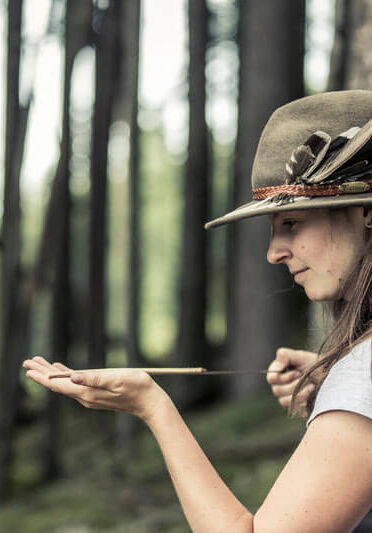
And as Palmira is not merely battling her way through the undergrowth as a research scientist but has been specifically commissioned to do so by Austria’s federal forest service, the data she collects not only provides useful information to the forest’s owner but also helps create forest management guidelines for the next ten years.
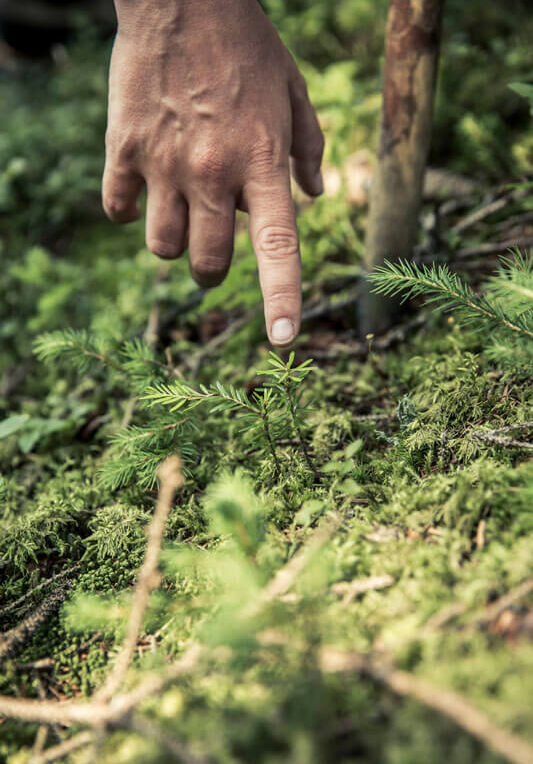
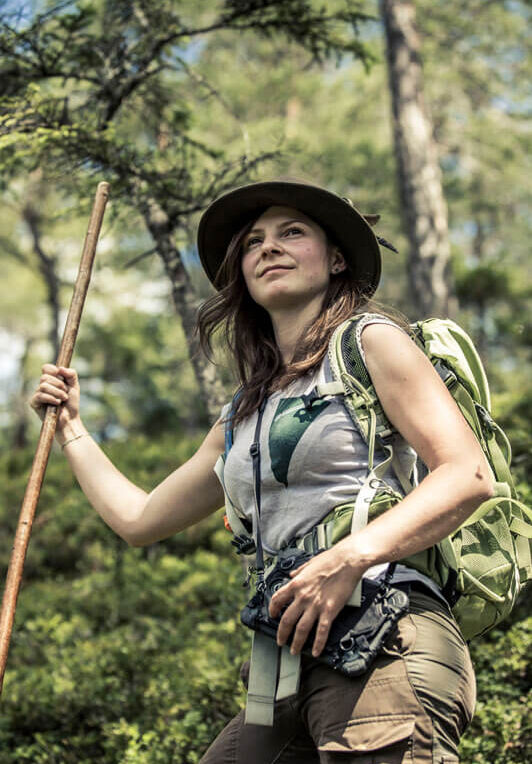
Expertise for the future
The tree researcher emphasises that it is only through this kind of work that we can preserve the natural wonder of the forest. And it is particularly in times of climate change in which forest pests like the bark beetle are becoming increasingly widespread, that extra special care is required: “Although we work on the basis of long time frames in the forestry sector, in the case of these acute risks, we often have to act very quickly and without compromise”, Palmira warns. Only then will it be possible for her next diagnosis of the forest – when she or one of her twelve colleagues returns in twelve years’ time – to be exactly the same as this year: healthy.
Image and text: Bernhard Huber | Johannes Stühlinger
Zillertal magazine summer 2020
Even more stories from the Zillertal

Holiday with momentum
Fine fairway carpets, top bunkers, well-kept greens –
and all of this embedded in the magnificent nature of the Zillertal.
At the Golf Club in Uderns, every swing is an experience.
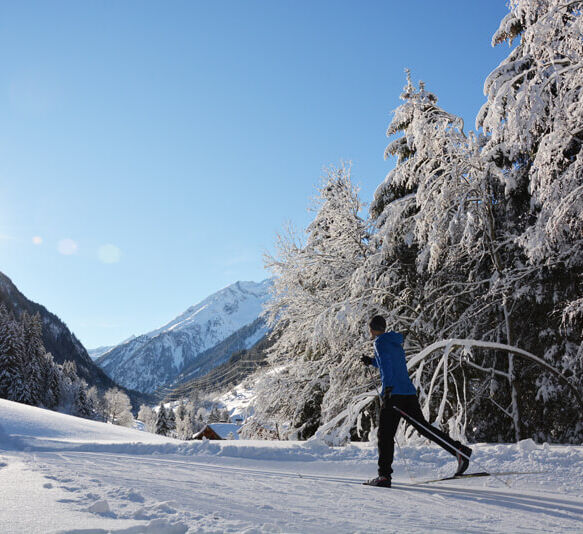
Winter magic Ginzling
The mountain village, where cross-country skiing, hiking and tobogganing turn into a fabulous outdoor experience.
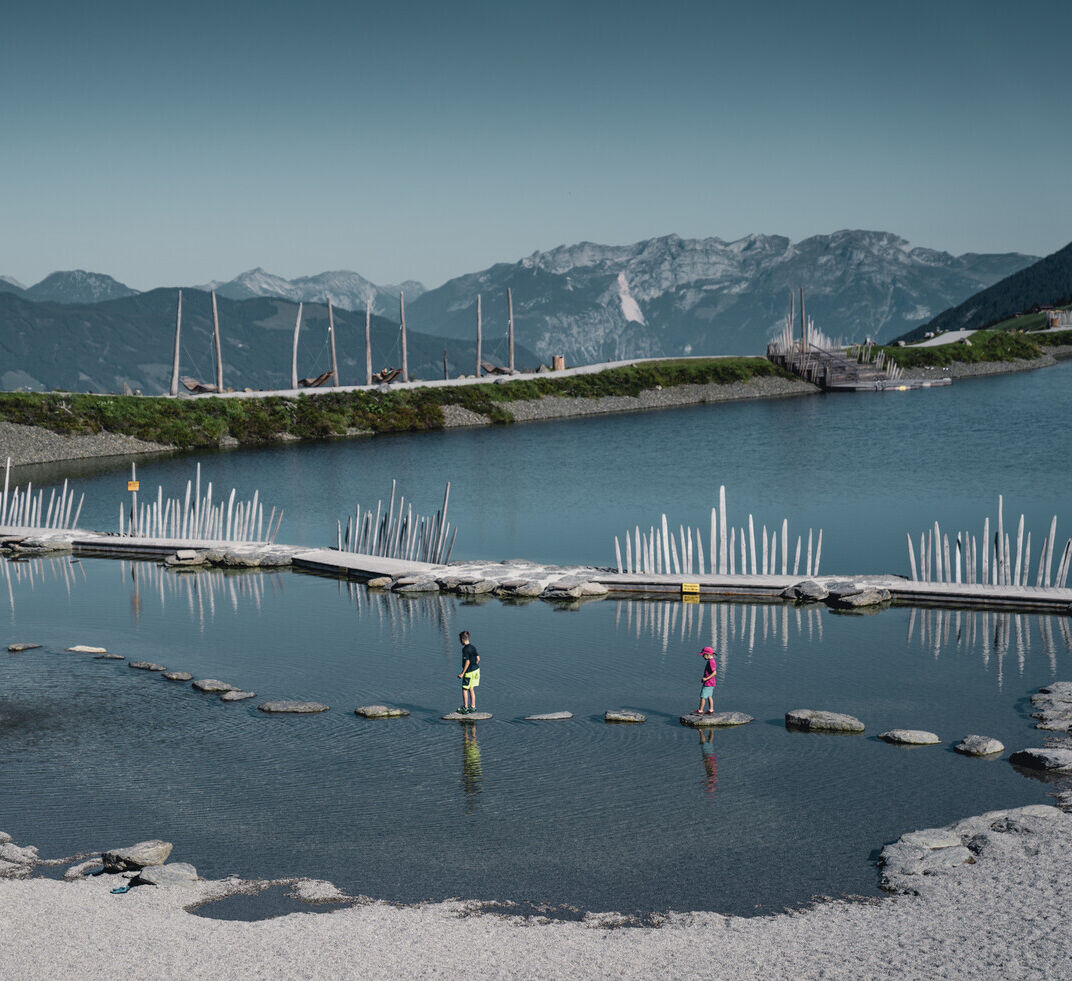
Swimming bliss on the mountain
Where the water is as clear as the mountain air. Where there’s a soundtrack of waves and children’s laughter. Where the mountain calls and we answer with a daring dive. Welcome to the magnificent lake Fichtensee!


